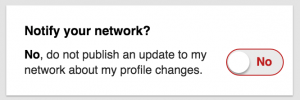Facebook advertising is well-known as one of the most affordable ways to reach your target audience. There are 1.39 billion monthly users to target. But Facebook isn’t always easy to work with. Set a budget and they will spend it. Facebook is very easy to spend a lot of money in a short space of time on.
You need to make sure that you are doing everything right to ensure you are getting the most for your money. In this guide, you are going to learn how to properly scale Facebook ads.
Project Management and Minimum Spend
The way you manage your Facebook ads and how you test them will influence whether your campaign is a success or not. First of all, you must keep accurate records of what you have tested and what you haven’t tested. At a glance you should be able to see what has worked and what hasn’t.
The CEO of Cloudswave.com said, “We believe that online project management requires you to keep records in order to prevent yourself from making the same mistakes twice. Facebook ads are no exception. Random testing is an easy way to lose money.”
At the same time, you have to go out of your way to adhere to a minimum spend. Common marketing thinking is that you can throw more money at a problem in order to get better results. Not so with Facebook. Sometimes spending more can actually hurt your results.
So what is the minimum spending you should adopt during testing?
The answer is you should test at the smallest level possible, while still getting relevant results. On Facebook, that level is $ 5 per day. Your $ 5 per day represents a small enough amount so your ads will get shown (except during major holiday periods) while avoiding overspending.
How Long Should You Run an Initial Ad for?
An initial ad is usually split tested against another one. You are not yet sure whether you are going to run with it on a long-term basis. Running with an initial ad used to mean that you could run it for 24 hours and receive relevant results.
With so much competition in Facebook advertising, you now need to run it for at least 72 hours. Most experts agree that this is the minimum time necessary for Facebook’s algorithms to settle down. It’s also the minimum time needed to gain any credible results.
So what should you do after this period has elapsed?
Monitor the results and see how the ad has done. If it’s done significantly better than the original ad you were testing against, you would declare this as the winner and consider scaling it. If it performed worse, you would cull it.
On the other hand, if it got similar results you may decide to run with it because you are hitting a different audience. It may be worthwhile scaling this ad, even though it hasn’t achieved anything significant. But that’s entirely up to you.
Your Guide to Properly Scaling Facebook Ads
When you find a winner, you may be tempted to throw a huge amount of capital at the ad in order to gain maximum results. But Facebook ads don’t work like this. They have a limited audience based on the interests you set for them.
Generally, you can only scale an ad so much before it tanks. This is because once your audience has seen the ad, it will be more difficult to get them to see it again. It’s inadvisable to show an ad to someone multiple times because they may shoot it down as spam.
The bigger the audience the bigger the spend per day. Correct scaling always requires you to follow the same process.
First of all, you should never scale by more than 50% every three days. Anything over this and the algorithms are prone to biting you. If your ad is still winning, you can scale it by another 50%. Repeat this process until you start to get diminishing returns.
Last Word
You may be wondering why Facebook ads work this way. And the truth is nobody really knows. Facebook has never revealed the precise way in which its algorithms work. Furthermore, the algorithms change so often. Two years ago, the algorithms didn’t work this way and it was possible to scale by throwing a large amount of money at the problem.
Scaling is a delicate balancing act that will require a lot of trial and error. How will you start testing and scaling your Facebook ads today?
Digital & Social Articles on Business 2 Community(43)







